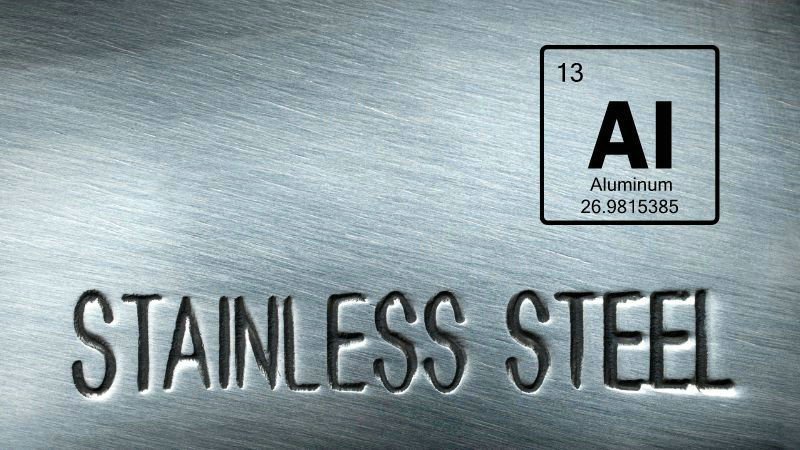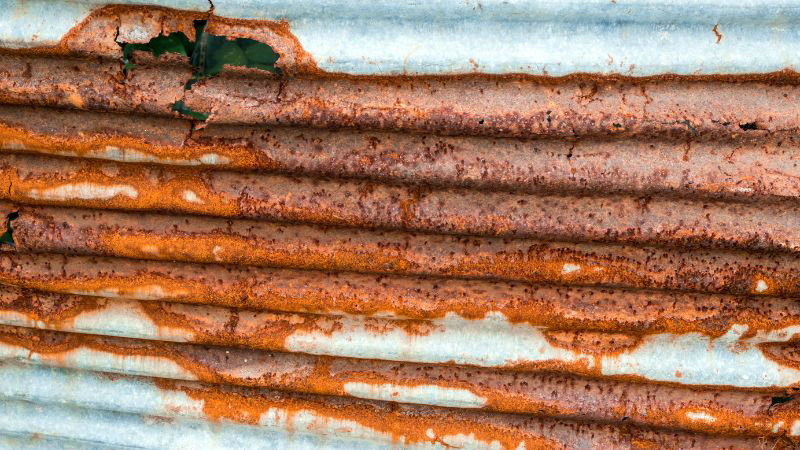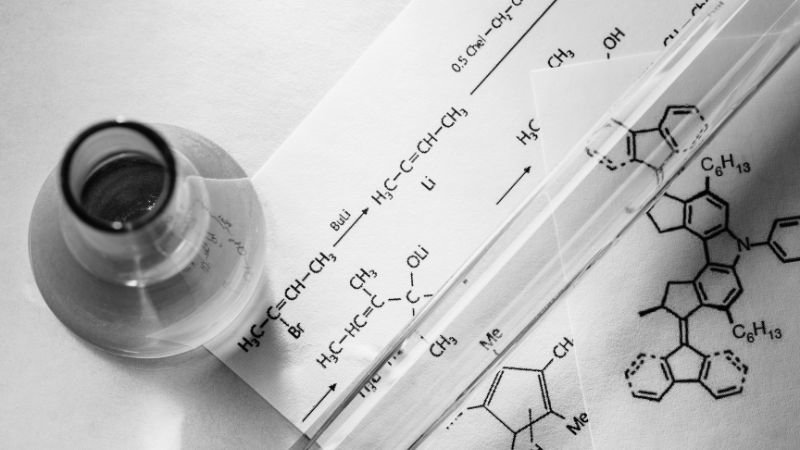
The two metals, stainless steel and aluminum, are common materials you come across in many construction and household items. You might wonder if it’s safe to use them together. Yes, stainless steel can react with aluminum, especially in the presence of moisture.
What is Galvanic Corrosion
Galvanic corrosion, also known as bimetallic corrosion or dissimilar metal corrosion, is an electrochemical process that occurs when two dissimilar metals are in electrical contact with each other in the presence of an electrolyte (such as water or moisture). In this process, the more active metal (the anode) corrodes at an accelerated rate, while the more noble metal (the cathode) corrodes more slowly or not at all.
Galvanic corrosion can occur when stainless steel and aluminum are in direct contact, especially in the presence of an electrolyte like water or moisture. In this galvanic couple, aluminum acts as the anode and corrodes preferentially, while stainless steel acts as the cathode and is protected.
What Influences the Reaction Between Aluminum and Stainless Steel
The reaction between stainless steel and aluminum depends on multiple factors. These include the environment, surface conditions, and the presence of electrolytes.
Environmental Factors
The environment plays a crucial role. Humidity and temperature can accelerate reactions. High humidity levels can enhance the formation of rust on stainless steel.
Pollutants like sulfur dioxide can also influence the reaction. Outdoor environments may speed up reaction rates compared to indoor settings. Be mindful of your environment when using these metals together.
Surface Conditions

Surface conditions of both metals can affect reactions. Rough surfaces have more area for interaction.
Electrolyte Presence
The presence of electrolytes like saltwater can increase reaction rates between stainless steel and aluminum.
In marine environments, saltwater acts as an electrolyte, speeding up corrosion. Electrolytes can form even from water with minerals. If your use involves moisture, consider using a protective barrier to prevent direct contact between the metals.
How to Prevent Galvanic Corrosion Between Aluminum and Stainless Steel

Here are two ways to use stainless steel and aluminum together while preventing corrosion.
Preventing a reaction between stainless steel and aluminum involves using insulating materials and applying protective coatings. These methods help to minimize the risk of galvanic corrosion.
- Insulating Materials:
Using insulating materials is effective in keeping stainless steel and aluminum apart. You can use rubber, plastic, gasket or fiberglass to create a barrier. These materials do not conduct electricity, which stops galvanic action from happening.
For example, you can place rubber washers between stainless steel bolts and aluminum surfaces.
Another option is to wrap one of the metals in plastic before joining them. This is a simple but crucial step in preventing reactions. Pay close attention to where the metals touch. Even small areas of contact can lead to corrosion.
2. Protective Coatings:
Applying protective coatings to both metals can also help. Coatings like paint, varnish, or specialized anti-corrosion products act as a shield. They keep moisture and electrolytes away, reducing the chance of galvanic action.
For stainless steel, you might use a chromium oxide layer. This naturally forms on the surface and helps prevent rust. Aluminum can be coated with anodizing, which thickens its oxide layer.
Ensure that the coatings are applied evenly and maintained well. Any scratches or damages to the coating can lead to exposure and potential corrosion. Regular inspection and touch-ups are important for long-term protection.
Frequently Asked Questions
How can galvanic corrosion be prevented when aluminum and stainless steel are in contact?
Use insulating materials between the metals. Apply protective coatings to prevent direct contact. Ensure proper drainage and ventilation to avoid water accumulation, which can speed up corrosion.
What methods are available for bonding aluminum to stainless steel?
You can use mechanical fasteners like screws and rivets. Adhesive bonding is another method, using epoxies or other strong adhesives. Welding and soldering can also be used, but require special techniques due to the different properties of the metals.
Are there any metals that should be avoided when working with stainless steel due to compatibility issues?
Avoid using metals like carbon steel and copper when stainless steel is present. These metals can increase the likelihood of galvanic corrosion. Stick to metals that are more compatible with stainless steel, such as certain types of nickel alloys.
How does the reaction between galvanized steel and aluminum differ from that between stainless steel and aluminum?
When galvanized steel and aluminum interact, the zinc coating on the steel provides a sacrificial barrier, reducing the rate of corrosion on the aluminum.
With stainless steel and aluminum, there’s no such barrier, so galvanic corrosion can proceed more rapidly.
